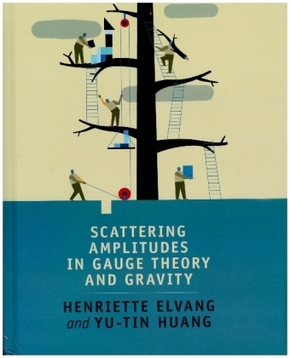
Scattering Amplitudes in Gauge Theory and Gravity
| Verlag | Cambridge University Press |
| Auflage | 2015 |
| Seiten | 323 |
| Format | 19,5 x 25,5 x 2,0 cm |
| Gewicht | 890 g |
| Artikeltyp | Englisches Buch |
| EAN | 9781107069251 |
| Bestell-Nr | 10706925UA |
This book provides a comprehensive, pedagogical introduction to scattering amplitudes in gauge theory and gravity for graduate students.
Providing a comprehensive, pedagogical introduction to scattering amplitudes in gauge theory and gravity, this book is ideal for graduate students and researchers. It offers a smooth transition from basic knowledge of quantum field theory to the frontier of modern research. Building on basic quantum field theory, the book starts with an introduction to the spinor helicity formalism in the context of Feynman rules for tree-level amplitudes. The material covered includes on-shell recursion relations, superamplitudes, symmetries of N=4 super Yang-Mills theory, twistors and momentum twistors, Grassmannians, and polytopes. The presentation also covers amplitudes in perturbative supergravity, 3D Chern-Simons matter theories, and color-kinematics duality and its connection to 'gravity=(gauge theory)x(gauge theory)'. Basic knowledge of Feynman rules in scalar field theory and quantum electrodynamics is assumed, but all other tools are introduced as needed. Worked examples demonstrate the techniques discussed, and over 150 exercises help readers absorb and master the material.
Inhaltsverzeichnis:
Preface; 1. Introduction; Part I. Trees: 2. Spinor helicity formalism; 3. On-shell recursion relations at tree-level; 4. Supersymmetry; 5. Symmetries of N = 4 SYM; Part II. Loops: 6. Loop amplitudes and generalized unitarity; 7. BCFW recursion for loops; 8. Leading singularities and on-shell diagrams; Part III. Topics: 9. Grassmannia; 10. Polytopes; 11. Amplitudes beyond four dimensions; 12. Supergravity amplitudes; 13. A colorful duality; 14. Further reading; Appendix; References; Index.
Rezension:
'In recent years, a series of surprising insights and new methods have transformed the understanding of gauge and gravitational scattering amplitudes. These advances are important both for practical calculations in particle physics, and for the fundamental structure of relativistic quantum theory. Elvang and Huang have written the first comprehensive text on this subject, and their clear and pedagogical approach will make these new ideas accessible to a wide range of students.' Joseph Polchinski, University of California, Santa Barbara
